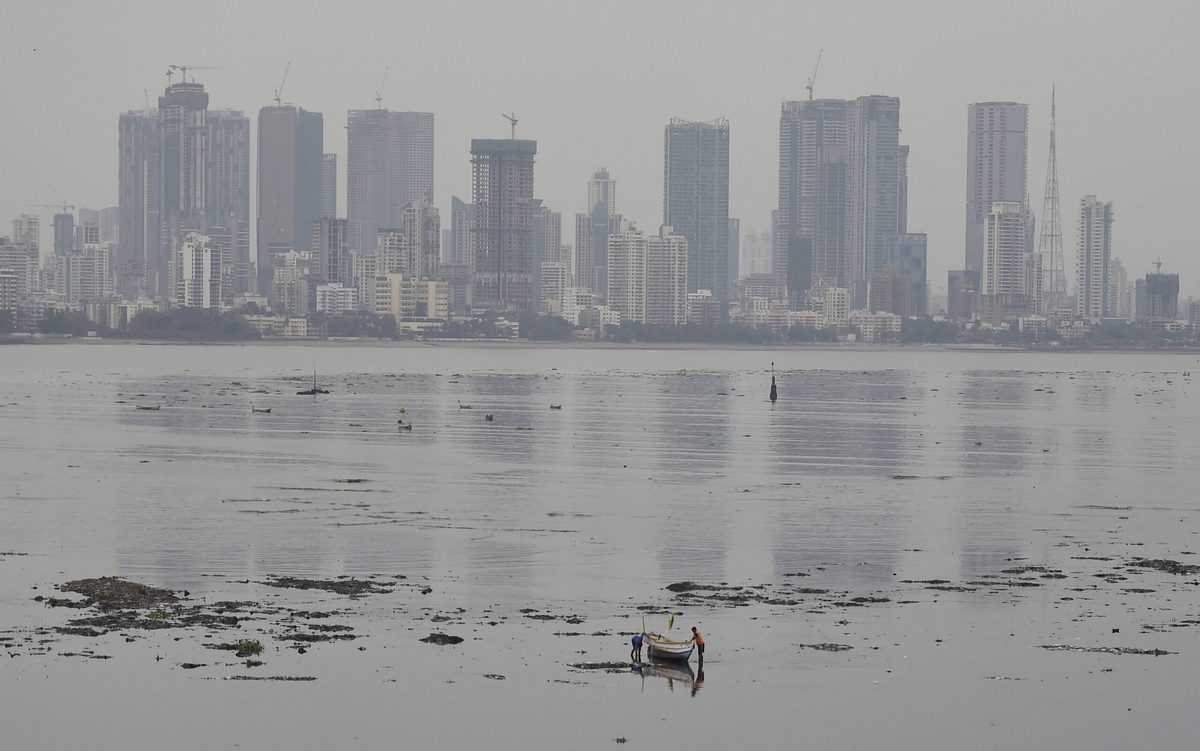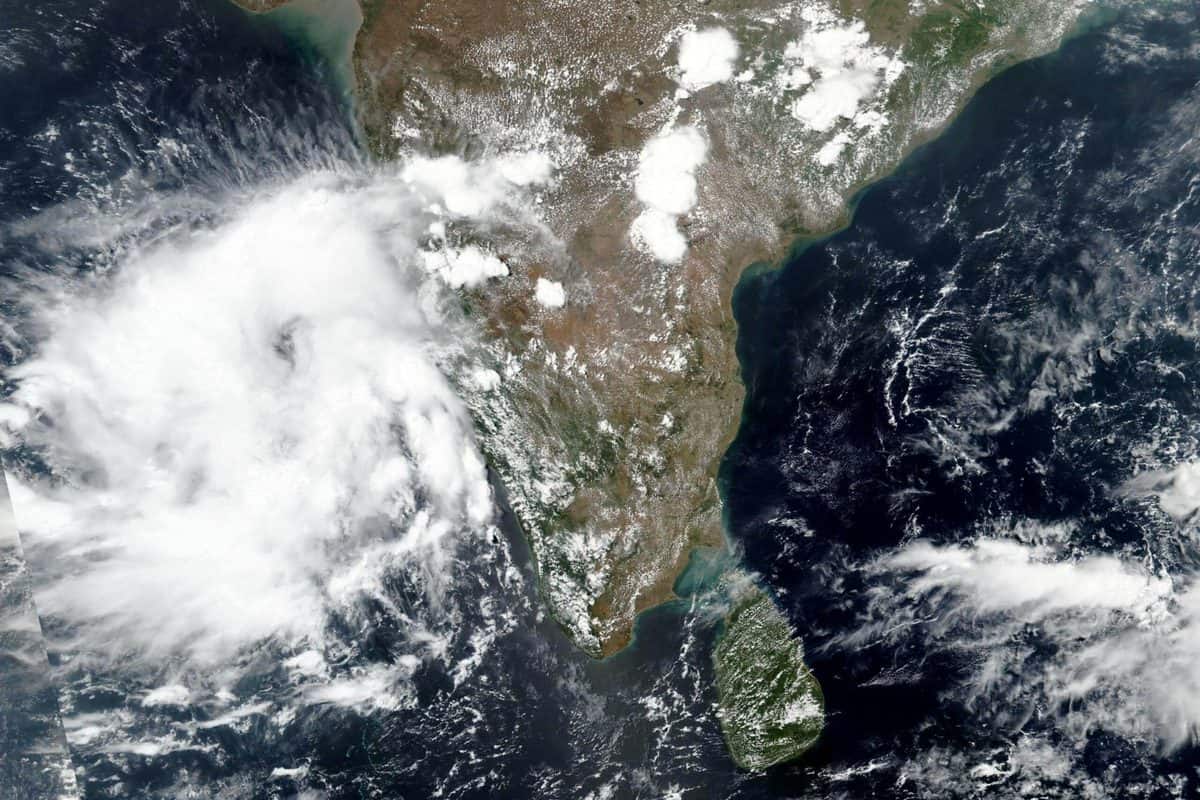Mumbai: Maharashtra braced for the onslaught of the Cyclone ‘Nisarga’ currently hovering around 175 km from south-southwest of Mumbai — which is expected to make landfall near Harihareshwar in adjoining Raigad district sometime on Wednesday afternoon.
Updates
Cyclone ‘Nisarga’ makes landfall near Maharashtra’s Raigad district
The landfall process of Cyclone ‘Nisarga’ has begun and will continue for three hours, the India Meteorological Department said on Wednesday.
The right side of the cyclone’s wall cloud passed through coastal Maharashtra, mainly covering the Riagad district.
“The centre of the cyclone is very close to the Maharashtra coast. The landfall process has started and it will be completed in three hours,” said IMD.
The north-east sector of the eye of the cyclone is currently entering the land. The severe cyclone will cross Maharashtra coast, close to Alibag in the next three hours.
“The cyclone will gradually enter into Mumbai and Thane district during the next three hours,” stated IMD in its 12 p.m. bulletin.
The cyclone is currently whirling with a wind speed of 100-110 kmph, gusting to 120 kilometres per hour 40 km away from Alibagh, 95 km from Mumbai and 325 km from Surat.
The weather bureau has sounded red alert for at least seven coastal districts of Maharashtra, while several districts along Gujarat’s coast are also expecting heavy rainfall.
Nisarga comes on the heels of Cyclone ‘Amphan’ which had killed close to 90 people when it hit eastern coast of India as well as Bangladesh on May 20, flattening villages, destroying farms and leaving millions without electricity.
Nisarga: Evacuation work nearly complete, 43 NDRF teams on spot
With landfall process of Cyclone ‘Nisarga’ afoot and expected to continue for at least three hours hitting coastal districts of Maharashtra, Gujarat and Goa, National Disaster Response Force chief S.N. Pradhan on Wednesday said the evacuation work was nearly complete with 43 teams of the NDRF on the job.
The cyclone was moving along the predicted path announced by the India Meteorological Department (IMD) and the science of cyclone building up was evident in the southern district of Maharashtra, Pradhan added.
In Ratnagiri — a port town in Maharashtra — the NDRF Director General said the waves have gone high and the winds and rain have picked up.
The landfall began a little after 1 p.m. just south of Alibaug coastal town of Raigad district as was predicted.
Earlier Pradhan had said “The cyclone was expected to make landfall sometime in the afternoon between 2 pm and 4.30 pm.” A total of 43 NDRF teams were deployed on the job and the evacuation work was complete in all respects, he stated then.
Of the 43 NDRF teams, 40 are deployed and three are reserved. Eighteen of these have been deployed in Gujarat, 21 in Maharashtra, two in Daman and Diu, and two in Dadar and Nagar Haveli. Most of the teams had been deployed in coastal districts facing the Arabian Sea.
“Further, precautionary measures have also been taken and people in cyclone shelters are being taught life skills with social distancing,” Pradhan said. “I believe, all the preparations are in order for us to face the cyclone whether from the central agencies or the state agencies side. The coordination is of a high order. Let us hope that we are right through the cyclone.”
Nisarga comes days after the eastern coast was battered by Amphan. The cyclone is likely to cross north Maharashtra and south Gujarat coasts between Harihareshwar town in the Raigad district and Daman as a severe cyclonic storm.
After May 1961, Nisarga will be the first cyclone to hit Maharashtra coast in June. As per predictions, Maharashtra coastal districts, like Sindhudurg, Ratnagiri, Thane, Raigad, Mumbai and Palgarh will also be affected.
The weather bureau has sounded red alert for at least seven coastal districts of Maharashtra, while several districts along Gujarat’s coast are also expecting heavy rainfall.
All emergency services, the police, fire brigade, NDRF and SDRF, Army, Navy, Air Force, Coast Guard, Home Guards and others are fully geared for the anticipated fallout of the cyclone, while the domestic flight operations have been curtailed as a precaution.
Slated to hit Raigad at a dizzying wind speed of 110-120 kmph over the next six hours, it is very likely to intensify into a severe cyclonic storm, the effects will be experienced in the entire Konkan coastal region and adjoining districts of western Maharashtra, said IMD, Mumbai.
Presently, the Nisarga is being tracked by the Doppler Weather Radars in Mumbai and Goa as it swirls gradually towards the land. According to the IMD, the tropical storm is currently 130 kilometres from Alibaug, 175 kilometres from Mumbai and 400 kilometres from Surat in Gujarat.

The IMD has also warned of a storm surge of 0.5 to one meter, which is going to inundate areas up to two kilometres in Maharashtra’s Raigad and Thane districts.
The Mumbai International Airport Ltd. announced on Wednesday that it will operate only 19 flights — including 11 outgoings — instead of the regular 50 daily, in view of the cyclone.
The flights shall be operated by Air India, AirAsia, IndiGo, GoAir and SpiceJet subject to possible last-minute changes in schedules,
Mumbai has been battered by continuous rains since Tuesday evening and this morning, several low lying were inundated in the city and suburbs.
While prohibitory orders are clamped in the city, Mumbai Police and other security forces are out in full swing to ensure people don’t step out to the seafronts, promenades or beaches and other open spaces.
As a precautionary measure, an estimated 2,000 people living in the non-pucca houses have been shifted to safer locations and an estimated 2,000-plus slum-dwellers in low-lying areas have been asked to evacuate.
Earlier Wednesday, the India Meteorological Department (IMD) issued ‘Red Alert’ for June 3 for Mumbai, Thane, Raigad, Palghar, Nashik, Dhule, Nandurbar. It will continue on June 4 for Palghar, Dhule and Nandurbar. Alerts have also been issued for Ratnagiri and Sindhudurg districts.
Nisarga comes on the heels of Cyclone ‘Amphan’ which had killed close to 90 people when it hit eastern India and Bangladesh on May 20, flattening villages, destroying farms and leaving millions without electricity.

